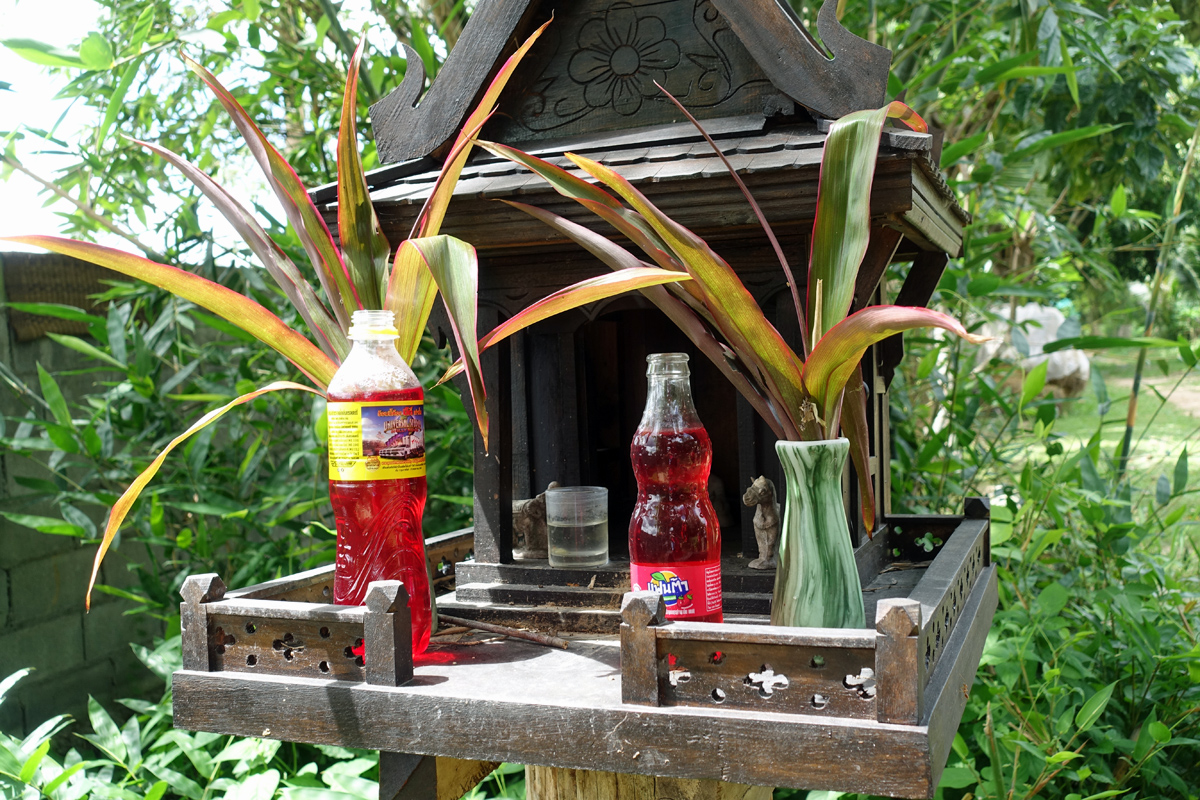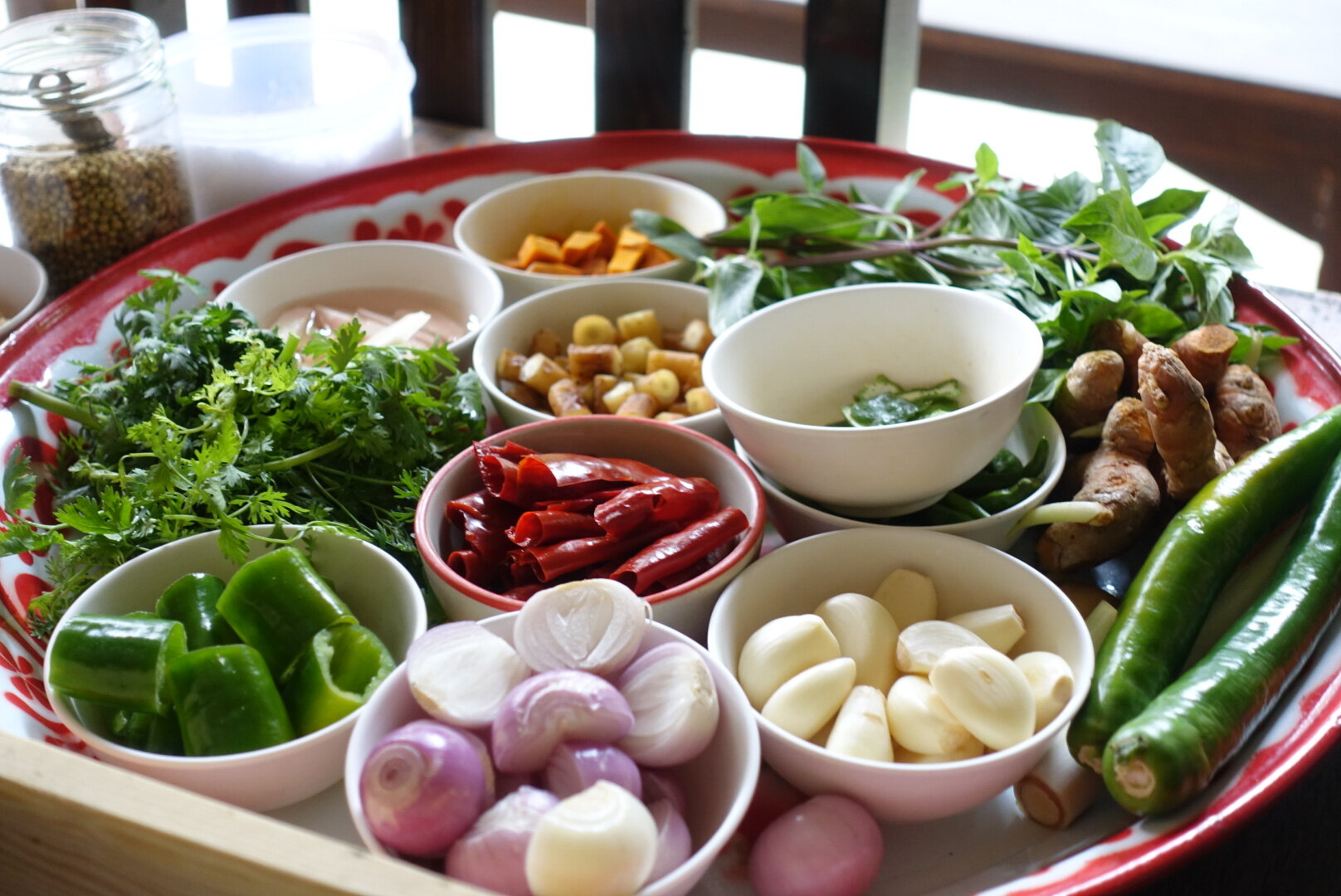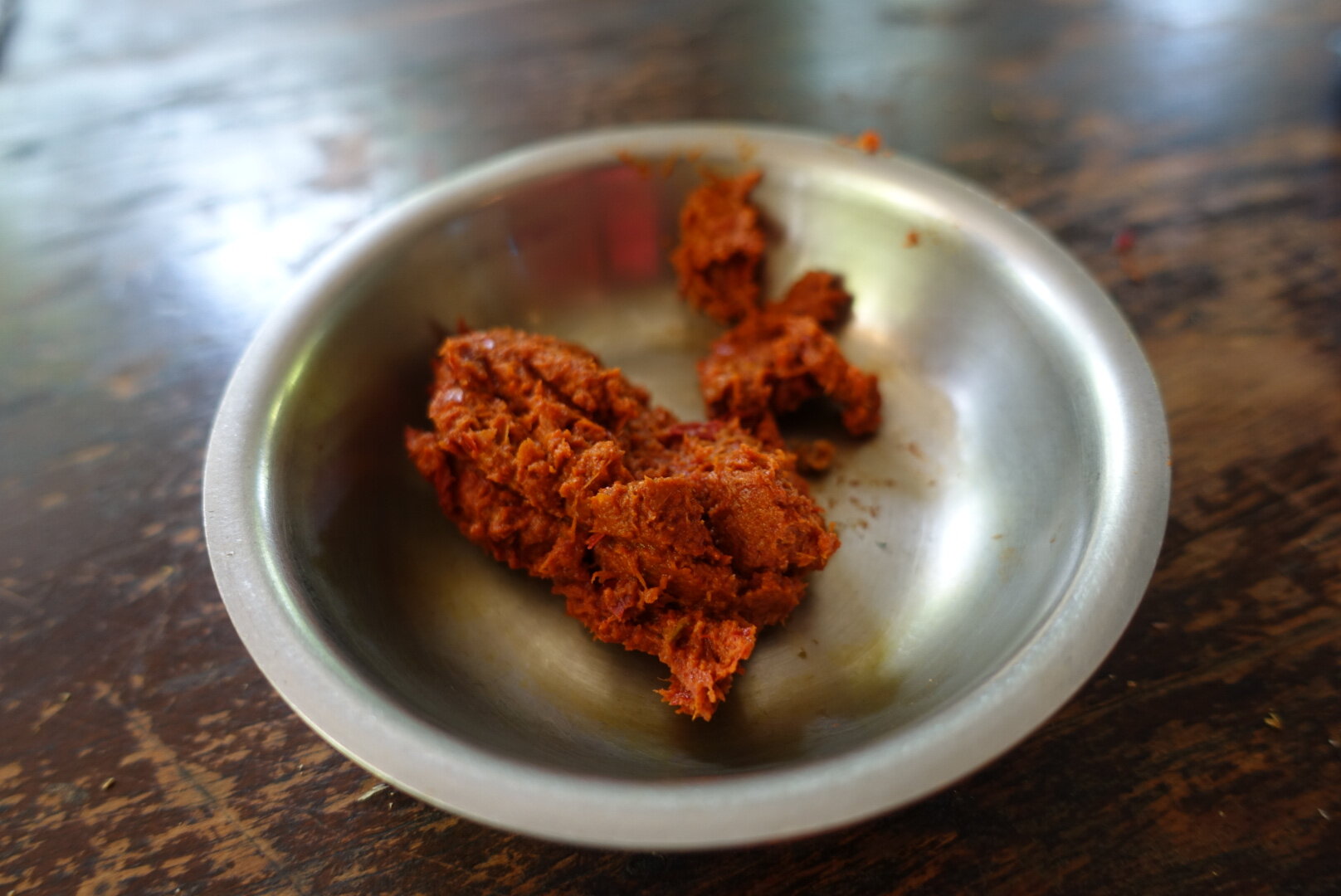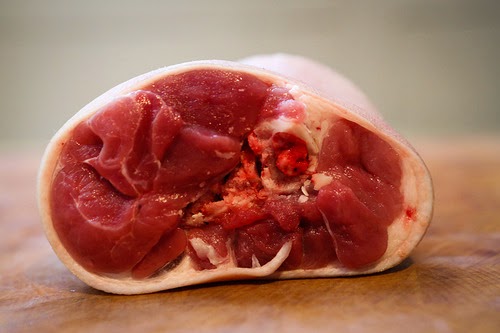Toor dal
So many languages, so many names for Cajanus cajan, the scientific name for pigeon peas. Outside India, the Hindi name "toor" (तूर दाल) is mostly used when referring to Indian dal recipes, within India there are many more names for this legume depending on the region.
In the early days of YouTube I tried toor dal from Manjula's Kitchen YouTube-channel a few times and ten years on, her recipe is still online. I tried it again and it still works for me. The basics is of course cooking the toor with salt and turmeric in a pressure cooker. After cooking 1 cup of dal in 4 cups of water and 1 teaspoon salt and 1/2 teaspoon turmeric, add 1 tablespoon fine chopped ginger, 1 teaspoon mango powder (amchoor) and 1 teaspoon garam masala.
Manjula is Jain and therefor vegetarian so she doesn't use garlic or onions in her recipes. The substitute for garlic and onion is a pinch asafoetida (hing).
There are two different chaunk/seasoning versions for this toor dal. One with vegetables and one with spices only,
Version 1
2 tablespoons clarified butter
1/2 teaspoon cumin seeds
1/2 teaspoon black mustard seeds
2 bay leaves
Pinch of asafetida (hing)
4 whole red chili (sabut lal mirch)
1/4 teaspoon paprika
Heat the butter in a saucepan. Add hing, cumin seeds, and mustard seeds when the butter is hot. After the seeds crack, stir for a few seconds. Add bay leaves, whole red chilies, and paprika. Stir for a second, adding one tablespoon of water to prevent burning. Pour in spice mix over dal.
Version 2
2 tablespoons clarified butter
1/2 teaspoon cumin seed
1/2 teaspoon black mustard seed
1/2 teaspoon red chili powder
2 bay leaves
Pinch of asafetida (hing)
1 tomato medium chopped
1 small zucchini chopped into 1 inch long cubes
6 string beans chopped about 1 inch long
Heat the oil in a saucepan. Add hing, cumin seeds, and mustard seeds when the butter is hot. After the seeds crack, stir for a few seconds. Add bay leaves and chili powder. Stir for a few seconds. Add the vegetables. Stir and cook four to five minutes, until the vegetables are tender.
Combine the vegetables and the dal and mix gently.

























































